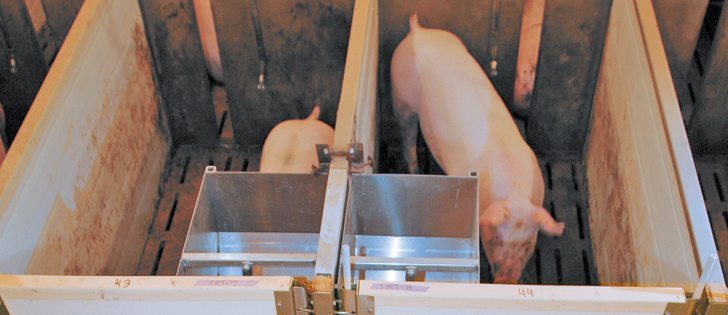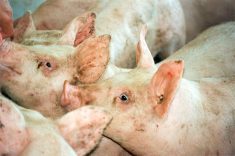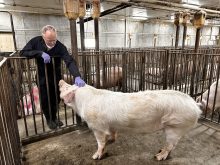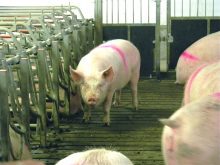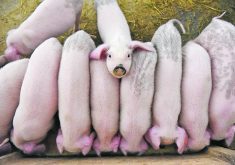‘We didn’t forget you’ | Ag minister addresses producers’ concerns
MISSISSAUGA, Ont. — Near the end of an industry and analyst-heavy conference on animal agriculture sustainability, Ontario hog farmer Amy Cronin offered what she thought was a bit of reality to the picture.
“I don’t think we’re sustainable as pork producers in Ontario or Can-ada, and we need to change and have a different approach,” said the chair of Ontario Pork.
There was much talk at the conference about the need for co-operation in the value chain and the need for sustainability throughout the industry.
Read Also

The Western Producer Livestock Report – November 6, 2025
Western Producer Livestock Report for November 6, 2025. See U.S. & Canadian hog prices, Canadian bison & lamb market data and sales insights.
Cronin farms near Bluevale in Huron County with her husband and six children, operating a 3,500 sow and farrow-to-finish operation that produces 60,000 market hogs a year.
This year, they are losing $50 on every animal they sell. Production costs for a 280 pound market hog are $180 and market prices average $130, Cronin told the conference.
“That’s not a sustainable model.”
She said society’s pressure for better environmental performance and animal welfare practices adds costs to farmers, but the market is not returning production costs.
However, the panel discussion offered her few solutions.
The hog industry has been battered by high feed costs, partly because of a North American drought and a Canadian dollar that is higher than the American dollar, which reduces prices on animals shipped south.
Martin Gooch, director of the Value Chain Management Centre at Guelph’s George Morris Centre, suggested the industry develop a new pricing model to replace one that is not working.
In an interview, Cronin said she was not sure what that meant.
She also said there is no time to develop a new system in the middle of an income crisis, with feed costs projected to be high for some time.
“In Ontario, our price is based on the United States price, so he’s saying why don’t you develop a product and charge what you need for it, but it is really difficult to make that change when you are in a commodity market,” she said.
Sobeys Inc. vice-president David Smith was asked if retailers could be part of the solution for producers.
He said increasing pork prices so that more money could be sent back to producers was not an option in a competitive, low-margin business like groceries.
“I heard that and thought of myself as definitely at the bottom of the food chain,” Cronin said later.
She said it is largely an issue of market power, and at the moment, producers are a weak link.
“Packers tell us what they need, but they’re not willing to pay more for our pigs,” she said. “And consumers want changes made in animal welfare so they have to be willing to pay more for that because you can’t have producers continuing to produce product and lose money every time they sell a hog. But I don’t see that right now either.”
She said once the current crisis ends, the Canadian hog industry should look at value chain arrangements in other countries and other industries “to see what has worked in other parts of the world and try to apply it to our industry.”
However, there is no time to dream of other market solutions in the midst of heavy losses, she said. Government must act.
“I’m really hoping our government will come through with AgriRecovery for the pork industry in Canada,” she said. “The U.S. drought and its effect on feed prices is what is making our industry unprofitable right now. AgriRecovery would be the perfect program to help farmers.”
Federal minister Gerry Ritz suggested after a federal-provincial minister’s meeting in Whitehorse in mid-August that action could be taken.
“We didn’t forget you,” he told Canadian Pork Council president Jean-Guy Vincent after the meeting, although no announcements were made.
Ritz said at a news conference Sept. 14 that AgriStability is there for producers, although the industry insists the program does not work after years of losses that wiped out farmer margins. He said industry leaders are part of a “tactical group” looking for solutions.
They will be “talking about innovative ways within the programming suite that we have to make sure that the hog sector is well cared for.”

